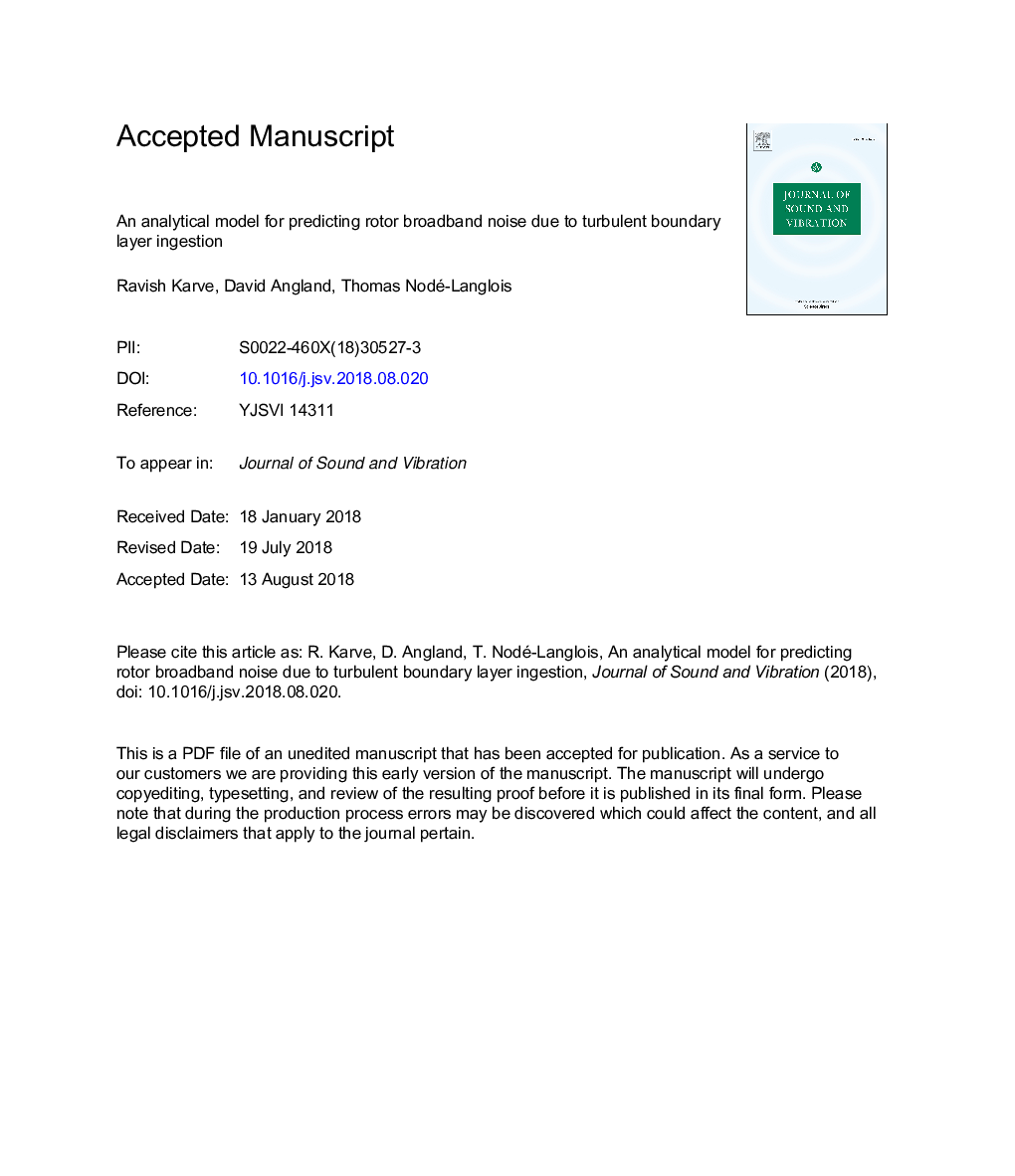| Article ID | Journal | Published Year | Pages | File Type |
|---|---|---|---|---|
| 10150732 | Journal of Sound and Vibration | 2018 | 43 Pages |
Abstract
A semi-empirical analytical model is developed that predicts the noise produced by a rotor ingesting a boundary layer in proximity to a hard-wall. The rotor boundary layer ingestion noise source is an important source to include when a rotor is installed close to an aircraft fuselage. This is the case for a tail mounted counter rotating open rotor for example. This paper presents three extensions to Amiet's simplified rotor noise model to predict this noise source. The first extension is the method of images, which is used to model the acoustic reflections of the hard-wall. The second extension is an anisotropic velocity spectrum, which is used to model the boundary layer turbulence. The third extension is a numerical switch to account for the partial loading of the rotor as only a part of it is immersed in the boundary layer. The homogeneous anisotropic turbulence model used is a simplification of the actual turbulence the rotor encounters in the boundary layer. In reality, the turbulence in the boundary layer is not homogeneous in the wall-normal direction. Therefore, while the integral length scale in the streamwise direction can be determined from experimental or numerical data, the integral length scale in the wall-normal direction must be chosen empirically. The rotor noise model is validated by comparing its predictions to experimental data at three different advance ratios. The proposed rotor noise model is then used to investigate the effect of the hard-wall on the noise spectrum. The hard-wall affects the downstream directivity more significantly than the upstream directivity for all the rotor operating conditions. Changing the advance ratio of the rotor does not significantly alter the effect that the hard-wall has on the noise spectrum.
Keywords
Related Topics
Physical Sciences and Engineering
Engineering
Civil and Structural Engineering
Authors
Ravish Karve, David Angland, Thomas Nodé-Langlois,
